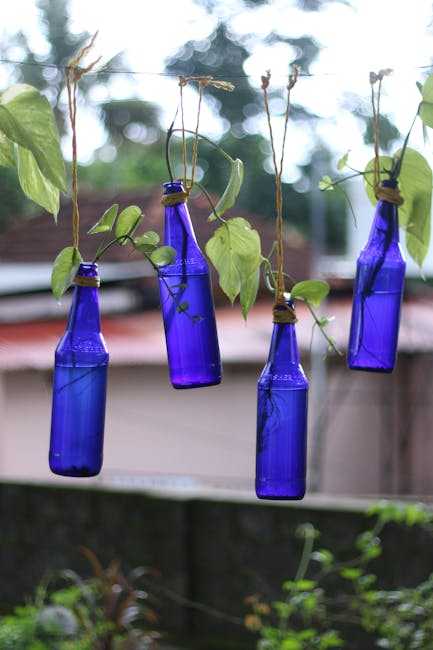Table of Contents
- Exploring the Evolution of Landscape Art Through the Ages
- Techniques and Mediums: What Artists Use to Capture Natures Beauty
- Creating Emotion: The Role of Color and Light in Landscape Artwork
- Choosing the Perfect Landscape Art for Your Space: Tips and Inspiration
- Q&A
- Final Thoughts
Exploring the Evolution of Landscape Art Through the Ages
Through centuries, the portrayal of natural landscapes has undergone significant transformations that reflect not only artistic innovation but also cultural and societal shifts. Early landscape art, as seen in the works of Chinese and Japanese artists, often integrated spiritual and philosophical elements. The serene mountains and flowing rivers in these pieces served as symbols of harmony between humans and nature, illustrating a profound reverence for the environment. This emphasis on spiritual connection laid the groundwork for future generations of artists to explore nature not only as a backdrop but as a central theme.
As we move into the Renaissance period, landscape art began to evolve in complexity and realism. This era celebrated the beauty of the natural world, with artists like Leonardo da Vinci and Raphael producing detailed backgrounds to their figures. The invention of linear perspective allowed painters to create depth, drawing the viewer’s eye into the landscape. Here, landscapes became a medium for demonstrating human achievement and the grandeur of the Earth. The shift towards realism also prompted artists to document true landscapes, capturing the essence of geographical locations through meticulous detail.
The 18th and 19th centuries ushered in Romanticism and later Impressionism, further redefining landscapes. Romantic artists, such as Caspar David Friedrich, imbued their artwork with emotional depth, frequently highlighting nature’s sublime power. Conversely, the Impressionists like Claude Monet celebrated the play of light and color, opting for a more ephemeral and subjective representation of the world around them. This break from realism allowed landscapes to evolve into a personal interpretation of beauty, facilitating a broader exploration of emotional and sensory experiences.
In contemporary art, landscape narratives have taken on new dimensions, incorporating elements of abstraction and technology. Artists explore environmental issues, the impact of urbanization, and the spectrum of climate change through their works. The use of mixed media and digital tools has enabled a hybrid approach, allowing landscapes to be not only viewed but also experienced in new ways. This evolution continues to provoke thought and passion, as modern landscapes challenge viewers to reflect on their relationship with the planet and envision its future.


Techniques and Mediums: What Artists Use to Capture Natures Beauty
Artists draw inspiration from the myriad colors, textures, and forms found in nature to create stunning landscape artwork. Each artist brings their unique vision to life through a variety of techniques and mediums, capturing the essence of the natural world. Watercolors, for instance, allow for fluid, dreamy representations of landscapes, emphasizing transparency and the play of light in a scene. The gentle washes can depict soft skies and flowing rivers, inviting viewers into the serene beauty of the outdoors.
Oil painting is another popular medium that allows for depth and richness. Its versatility enables artists to layer colors thickly or apply them more subtly, creating striking contrasts and vibrant scenes. The drying time of oils gives artists the opportunity to work and rework their creations, blending colors to capture the intricate details of a natural landscape, such as the rough texture of a rocky outcrop or the delicate sway of wild grasses. This medium often results in breathtakingly realistic portrayals.
In the realm of mixed media, artists often employ a combination of materials, including acrylics, pastels, and collage elements. This approach can bring unexpected texture and depth to their work. Pastels, for example, can create soft, pastel hues that mimic the lightness of a spring morning or the warmth of a sunset, while collaged elements might include snippets of pressed leaves or snippets of photographs, adding a tactile dimension to landscapes. This blending of materials encourages creativity and allows artists to express their personal experiences with the natural world.
| Medium | Characteristics | Usage in Landscapes |
|---|---|---|
| Watercolor | Translucent, light, fluid | Capturing atmosphere and softness |
| Oil Painting | Rich, blendable, varied texture | Realistic portrayals with depth |
| Pastels | Soft, vibrant, tactile | Creating vibrant skies and textures |
| Mixed Media | Innovative, layered, diverse | Expressing personal narratives |


Creating Emotion: The Role of Color and Light in Landscape Artwork
In the realm of landscape artwork, color and light are not merely elements; they are the very language through which artists convey emotion. Colors evoke feelings that can instantly transport viewers to a serene meadow, an exuberant sunset, or a dramatic mountain range. Each hue carries specific psychological weight: for instance, earthy tones often root us in tranquility, while vibrant reds and oranges can ignite passion and energy. Artists must wield this palette with intention, choosing shades that resonate not just with their style but also with the emotional response they wish to elicit from their audience.
Light, meanwhile, acts as a dynamic character within the composition. The skilled manipulation of light can create depth, ambiance, and even narrative within a piece. Consider the way soft morning light might cast gentle shadows and enhance natural details, inviting a sense of quiet reflection. Alternatively, the harsh glare of midday can reveal stark contrasts, adding tension and vitality to the landscape. Artists often use tools such as chiaroscuro—the interplay of light and dark—to guide the viewer’s eye and create a focal point, rendering their landscapes not just seen, but profoundly felt.
When analyzing landscape artwork, it’s beneficial to consider the emotional response generated by specific color-light pairings. Here are some common associations:
| Color | Emotion | Light Type |
|---|---|---|
| Blue | Calmness | Soft |
| Yellow | Joy | Bright |
| Gray | Melancholy | Muted |
| Green | Renewal | Natural |
Ultimately, the magic of landscape artwork resides in the artist’s ability to capture and manipulate these elements to create a unique emotional journey. Through thoughtful selections of color and light, they can evoke memories, stir the spirit, or provoke contemplation. Observers are not merely looking at a canvas; they are stepping into a world crafted from the artist’s vision—one that invites them to explore their own inner landscapes alongside those portrayed in the artwork.


Choosing the Perfect Landscape Art for Your Space: Tips and Inspiration
When selecting landscape art for your space, it’s essential to consider not only the aesthetics but also how the artwork resonates with the feel of your environment. Think about your existing decor and color schemes. If your interior leans towards warm tones, landscapes depicting golden sunsets or vibrant autumn foliage can enhance warmth and coziness. Conversely, cool-toned pieces featuring serene blues and greens can evoke calmness, making them perfect for bedrooms or meditation spaces.
To truly make a statement, consider the scale and placement of your artwork. Large, bold pieces can serve as focal points in rooms like living spaces or dining areas. Placing a dramatic landscape above a fireplace or behind a sofa can create an inviting atmosphere. On the other hand, grouping smaller landscapes together in a gallery wall style allows for a more dynamic and playful presentation, adding visual interest to hallways or home offices.
Another aspect to contemplate is the emotional impact of the artwork. Choose landscapes that stir your imagination or evoke memories. For instance, if you have fond memories of hiking in the mountains, a piece capturing a majestic mountain range may resonate deeply. Alternatively, artwork featuring serene lakes or beaches can transport you to a peaceful state, ideal for relaxation zones like reading nooks or meditation spaces.
| Type of Landscape | Ideal Room | Emotional Impact |
| Mountain Landscapes | Living Room | Adventure & Awe |
| Ocean Views | Bathroom | Calm & Serenity |
| Flower Fields | Bedroom | Joy & Warmth |
| Forest Scenes | Study/Office | Focus & Relaxation |
don’t shy away from mixing mediums and styles to create an eclectic look. Combining traditional paintings with modern prints or photographs can add depth and variety to your space. For a cohesive feel, choose a unifying theme such as color palette or subject matter. By considering these elements, you’ll not only enhance the ambiance of your home but also curate a collection of landscapes that speak to your personal journey and style.
Q&A
Q&A: Exploring the World of Landscape Artwork
Q1: What is landscape artwork? A1: Landscape artwork refers to artistic representations of outdoor scenes, capturing the beauty of nature. This genre encompasses a wide range of mediums, from traditional oil paintings and watercolors to modern photography and digital art. Artists often depict various elements such as mountains, forests, rivers, and skies, aiming to evoke the emotions and experiences associated with these environments.Q2: What are the different styles of landscape art? A2: Landscape art is incredibly diverse, featuring styles that range from realistic and impressionistic to abstract and surreal. Realism focuses on depicting scenes as they appear in nature, while impressionism captures the fleeting effects of light and color. Abstract landscape art may use color and form to convey feelings rather than a direct representation of the subject. Additionally, contemporary landscapes can incorporate mixed media, blending traditional and innovative approaches.
Q3: Who are some famous landscape artists? A3: Many renowned artists have made significant contributions to landscape art. Among them are the Dutch painter Vincent van Gogh, known for his vibrant interpretations of natural scenes, and the American artist Thomas Cole, a key figure in the Hudson River School. Other notable names include Claude Monet, whose impressionistic landscapes showcased light and atmosphere, and Georgia O’Keeffe, who brought a unique perspective to Southwestern landscapes.
Q4: How has the perception of landscape artwork changed over time? A4: Historically, landscape artwork was often viewed as a backdrop for historical or religious subjects, but it has evolved into a respected and independent genre. The Romantic era in the 19th century emphasized nature’s beauty and its emotional impact, further elevating its significance. Today, landscape art continues to evolve, with artists exploring environmental themes and the relationship between humankind and nature, often highlighting urgent ecological issues.
Q5: What role do landscapes play in art therapy? A5: Landscapes in art therapy can serve as powerful tools for expression and healing. They provide a connection to nature, which can be grounding and calming. Creating or viewing landscape art allows individuals to explore their feelings, memories, and emotions in a safe way. Whether depicting serene vistas or rugged terrain, landscapes can facilitate introspection and provide a sense of peace and clarity.
Q6: How can someone start creating their own landscape artwork? A6: To start creating landscape artwork, one should begin by observing nature closely. Take your time to explore different environments, whether it’s a local park, beach, or mountain range. Bring along a sketchbook to capture your impressions through sketches or photographs. Experiment with various mediums—like watercolor, acrylics, or pastels—and don’t be afraid to play with colors and techniques. Most importantly, let your unique perspective and emotional connection to the landscape guide your artistic process.
Q7: Where can I find landscape artwork? A7: Landscape artwork can be found in various places, from local galleries and museums to online platforms showcasing artists’ work. Websites dedicated to art, such as Artsy, Saatchi Art, and Etsy, offer a vast array of landscape pieces by emerging and established artists. Auction houses and art fairs are also excellent venues for discovering unique landscape art. Additionally, social media platforms, like Instagram, can provide insights into contemporary landscape artists and their portfolios.
